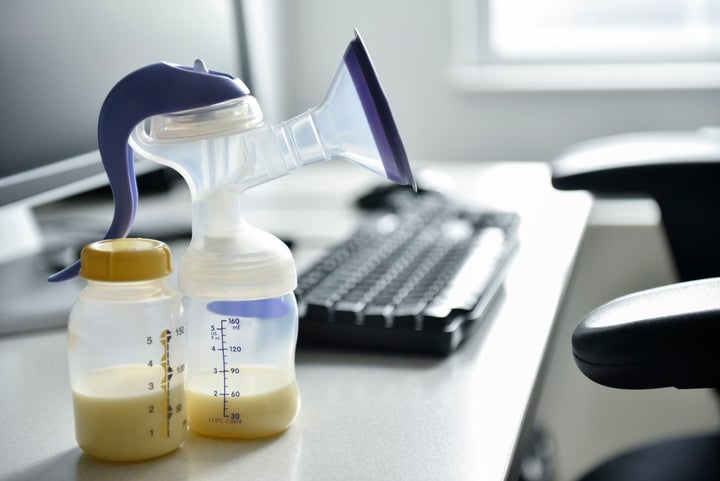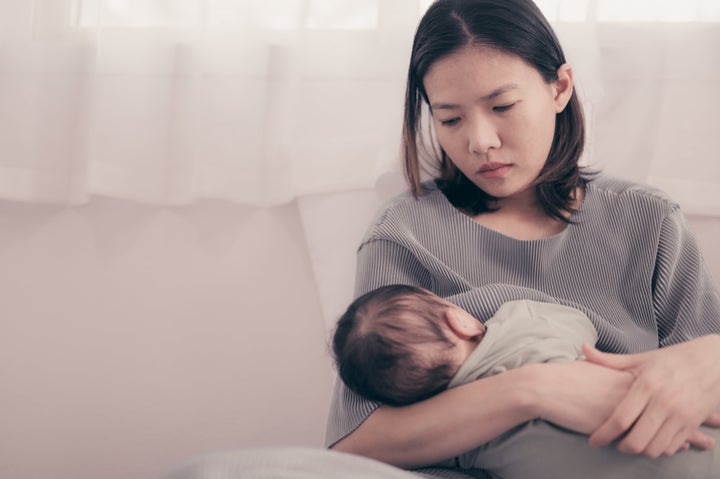The American Academy of Pediatrics recently updated its breastfeeding guidance for the first time in a decade — and one of the changes isn’t sitting well with some people.
Many of the recommendations in the new policy statement released on June 27 are similar to the group’s previous guidance. For example, the AAP still recommends mothers breastfeed exclusively for the first six months of an infant’s life. At that point, solid foods can also be introduced in addition to breastmilk.
One notable change is that the organization is now encouraging breastfeeding for two years or more, up from the previous recommendation of one year or more.
“The AAP supports continued breastfeeding, along with appropriate complementary foods introduced at about 6 months, for as long as mutually desired by mother and child for 2 years or beyond,” the policy statement reads, noting that this recommendation aligns with the guidelines of the World Health Organization and other medical organizations.
In the update, the group acknowledged that “significant societal changes are required” in order for parents to meet these goals. They called for pediatricians to support families who want to keep nursing and advocate for policy changes — such as universal paid family leave, workplace protections for pumping and insurance coverage for lactation supplies and support — that would make it more feasible in the U.S.
“There must be policy to actually support women and their babies in this endeavor.”
– Allison S. Gabriel, organizational psychologist
The policy statement’s lead author, Dr. Joan Meek, told The New York Times that the update was based on research about the health benefits of longer-duration breastfeeding, especially for the mother. These include things like reduced risk of type 2 diabetes, hypertension, breast cancer and ovarian cancer — though experts like health economist Emily Oster, author of “Cribsheet,” argue that these benefits may be overstated and are not well-supported by the data.
With the update, the AAP also aims to normalize breastfeeding past the one-year mark for families who choose to do so — a decision mothers are sometimes ridiculed for, Meek told HuffPost.
“Studies show us that some women are reluctant to share their continued breastfeeding with even their health care providers, because they have not felt supported in continuing to breastfeed beyond a year,” she wrote in an email.
Reducing stigma around extended breastfeeding and calling for policy changes that make families’ nursing goals more realistic is, indeed, a good thing.
As Karrie Locher — a registered nurse, certified lactation counselor and mother of four — told HuffPost: “Though we know that the benefits of breastmilk don’t just ‘shut off’ at one year, it has still unfortunately been a source of judgment when parents choose to breastfeed past 1… [The new guideline] also helps set a precedent that will hopefully trickle down into maternity leave laws, child care, insurance coverage for lactation support and pumping laws.”
Some women are frustrated by the new guidelines.
Despite the AAP’s good intentions, some have expressed concern that the new recommendation — and the timing of it — puts even more pressure on already overwhelmed moms. In this country there are already so many barriers to breastfeeding at all, let alone for two years.
Then there’s the fact that this new guidance came in the midst of the ongoing formula shortage that’s been rife with shameful messaging about how women should “just breastfeed” because “breastfeeding is free” — as if those are viable solutions to the problem.
“For women who are not able to breastfeed or pump breastmilk for myriad reasons, now being told that they should strive to breastfeed or pump for even longer is going to further the endless cycle of guilt that they may already feel for not being able to fulfill this element of being a mother,” organizational psychologist Allison S. Gabriel — a professor at the University of Arizona’s Eller College of Management who studies women in the workplace — told HuffPost.
“It feels a bit defeating, as we already have so many expectations as parents, yet such little support in place.”
– Karrie Locher, nurse and lactation counselor
Adding insult to injury: the guidelines were released days after the Supreme Court overturned Roe v. Wade, “when millions of American women are alarmed about restrictions on their reproductive and physical autonomy” — a move that “struck many as clueless and even callous,” opinion writer Jessica Grose wrote for The Times.
The AAP does suggest pediatricians have “nonjudgmental conversations” with families about their breastfeeding goals, and recognizes that extended breastfeeding — or any breastfeeding, for that matter — is “not always possible, despite the best of intentions.” Locher said that while she appreciates this acknowledgement, the new recommendation could still make some parents, herself included, feel like they’re not doing enough.
“Making it to the previously recommended one-year mark may have proven hard enough for some parents. Now, two years is suddenly recommended ― which may make parents feel like they’re always falling short if breastfeeding isn’t working for them, or if they previously weaned their child any earlier than two years,” Locher said. “There is already so much societal pressure to breastfeed ― yet the current support is lacking, which makes this new ‘goal’ or recommendation feel even more unattainable for some of us.”
“It feels a bit defeating, as we already have so many expectations as parents, yet such little support in place,” she added. “There should also be more support and acknowledgement for the numerous parents who cannot or do not breastfeed.”
In response to some of the pushback, Dr. Lori Feldman-Winter, chair of the AAP Section on Breastfeeding, told HuffPost: “We were careful to preface the recommendation by centering mothers and babies, that breastfeeding should last as long as mutually desired.” Meek also said that the guidelines “support making decisions about infant feeding in the manner that is best for [one’s] family” and that the AAP’s goal is to “support all moms and families.”
Workplace support for lactating moms is lacking.

JGI/Jamie Grill via Getty Images
For mothers who work outside of the home, the new recommendations may be particularly frustrating. As Grose pointed out in her piece for The Times, the PUMP Act — a bill designed to extend workplace breastfeeding protections to millions of women who aren’t covered by existing law — failed to pass the senate just before Roe was struck down.
“There is zero federal response in the United States to support paid family leave and access to resources aimed at facilitating breastfeeding or pumping breastmilk,” Gabriel said. “The AAP themselves recognizes a litany of reasons why these recommendations that they themselves are making are not going to materialize.”
Under federal law, hourly workers are entitled to breaks so they can pump during the workday. But the breaks do not have to be paid, meaning these parents are “literally having to make trade-offs between paying their bills and feeding their child,” Gabriel said.
“These types of recommendations do not exist in a vacuum,” she added. “With recommendations to breastfeed for two years means there must be policy to actually support women and their babies in this endeavor.”
Moms’ mental health needs to be taken into account, too.
People have also pointed out that the updated guidelines show a lack of regard for mothers’ mental health. Many women who struggle with breastfeeding say that it had a negative impact on their mental and emotional state. Researchers have found a link between negative early breastfeeding experiences and postpartum depression, though the association between the two isn’t well-understood.
“There is zero mention of maternal mental health, anxiety, and depression, all of which can become exacerbated from the demands of trying to balance motherhood, breastfeeding and other role domains — e.g., worker, spouse or partner or friend,” Gabriel said. “To make these recommendations and not acknowledge that mothers are struggling to stay afloat completely misses the moment of where many mothers are — myself included.”

Atipati Netiniyom / EyeEm via Getty Images
At the end of the day, women should be empowered to make the choices that best serve their personal motherhood journey, Gabriel said — whatever those may be.
“At the core, I believe the AAP is recognizing that in part by saying they want to remove the judgement and add support,” she said. “It just has to be to remove the judgment and add support for any decision women decide to make.”
For any parent who felt less-than after reading about the new guidelines, Locher offered some comforting words.
“What you’re doing is enough. What you’re doing is the right choice for your baby. The updated guidelines are in place to hopefully initiate change in policies to support breastfeeding parents, but they do not define your parenthood journey or your goals.”

























































